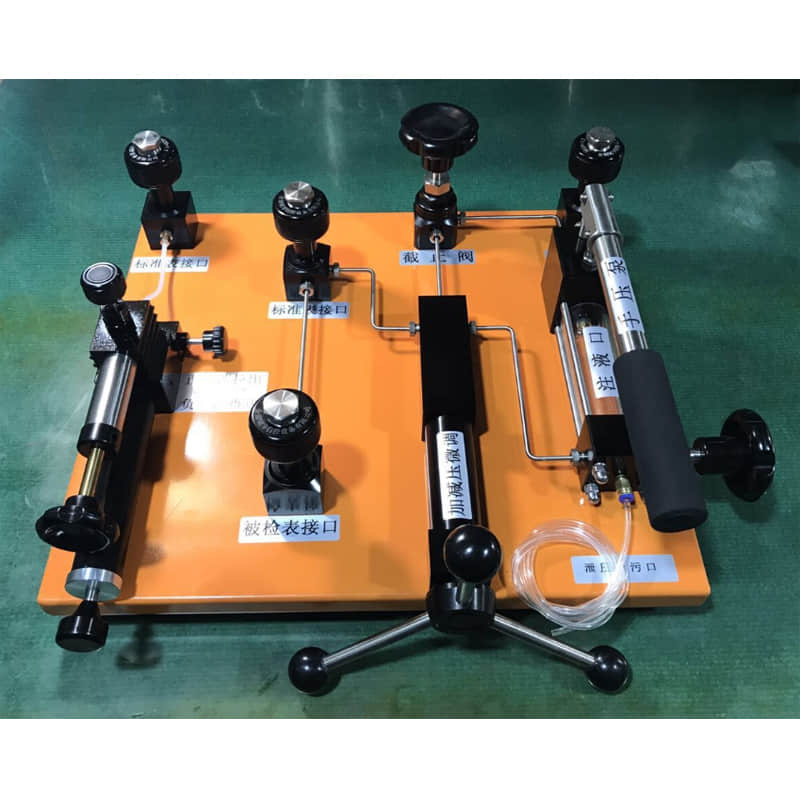In industries where precision is paramount, the accuracy of measurements can significantly impact the quality of processes, products, and safety standards. Two critical tools in the realm of measurement are calibration instruments and pressure transmitters. Each plays a distinct role in ensuring that measurements are both accurate and reliable, yet they serve different functions within industrial applications. Hongguang Instrument Factory, a leader in precision instruments, offers both calibration instruments and pressure transmitters designed to meet the highest standards of accuracy and reliability. This article explores the differences between these two essential tools and how they work together to ensure precise measurements.
Understanding Calibration Instruments
Purpose and Functionality
Calibration instruments are used to verify and adjust the accuracy of measurement devices, such as pressure transmitters, thermometers, or flow meters. These instruments are crucial for maintaining the integrity of measurement systems, ensuring that they produce reliable data over time. Calibration instruments work by comparing the output of the device under test with a known reference standard, identifying any discrepancies, and making necessary adjustments to correct them.
For example, the Hongguang CI-1000 calibration instrument is designed to calibrate pressure transmitters and gauges with a high degree of accuracy, offering a calibration uncertainty as low as ±0.01%. The CI-1000 can be used across various industries, from manufacturing and process control to healthcare, where precision is critical. By regularly calibrating measurement devices, companies can ensure that their systems remain accurate and compliant with industry standards.
Advantages of Calibration Instruments
- Ensures Measurement Accuracy: Calibration instruments like the CI-1000 ensure that measurement devices are functioning correctly, providing confidence in the accuracy of the data they produce.
- Compliance with Standards: Regular calibration helps companies comply with industry regulations and standards, which often require proof of accurate measurements.
- Prolongs Equipment Life: By identifying and correcting inaccuracies early, calibration can extend the life of measurement devices and reduce the need for costly repairs or replacements.
Limitations of Calibration Instruments
While calibration instruments are essential for maintaining accuracy, they are not used continuously in measurement processes. They are typically used periodically, meaning that between calibrations, measurement devices can drift out of spec without immediate detection. This limitation highlights the importance of regular calibration schedules to maintain accuracy over time.
Understanding Pressure Transmitters
Purpose and Functionality
Pressure transmitters are devices that convert pressure measurements into an electrical signal that can be interpreted by control systems, data loggers, or display instruments. These devices are integral to processes where pressure needs to be monitored and controlled, such as in oil and gas, chemical processing, and HVAC systems.
The Hongguang PT-300 pressure transmitter, for example, is a robust and precise instrument capable of measuring pressure ranges from 0 to 10,000 psi with an accuracy of ±0.05%. The PT-300 is designed to provide continuous pressure monitoring, sending real-time data to control systems to ensure that processes remain within safe and optimal parameters.
Advantages of Pressure Transmitters
- Real-Time Monitoring: Pressure transmitters like the PT-300 provide continuous monitoring of pressure levels, allowing for immediate detection of deviations that could indicate a problem.
- Integration with Control Systems: These devices are designed to integrate seamlessly with automation and control systems, providing essential data for process management and safety.
- Durability and Reliability: Pressure transmitters are built to withstand harsh environments, ensuring consistent performance even in demanding conditions.
Limitations of Pressure Transmitters
Pressure transmitters are highly reliable but, like all measurement devices, they can drift over time due to factors such as temperature fluctuations, mechanical stress, or aging components. This drift can lead to inaccurate measurements if the transmitter is not regularly calibrated. Additionally, while pressure transmitters provide real-time data, they do not have the capability to self-correct any inaccuracies in their measurements, making periodic calibration essential.

Ensuring Accurate Measurements: The Role of Both Instruments
To ensure accurate measurements, it is essential to use both calibration instruments and pressure transmitters in tandem. Pressure transmitters like the PT-300 provide the real-time data needed for process control and safety, but their accuracy can diminish over time. Regular calibration with instruments like the CI-1000 ensures that these transmitters remain accurate and reliable.
By incorporating both calibration instruments and pressure transmitters into your measurement strategy, you can achieve a comprehensive approach to accuracy. Calibration instruments ensure that your pressure transmitters are providing correct readings, while the transmitters themselves offer the continuous monitoring necessary for real-time process control.
Q&A Section
1. How often should pressure transmitters be calibrated?
The frequency of calibration for pressure transmitters depends on the application and industry standards. However, it is generally recommended to calibrate pressure transmitters at least once a year. High-precision applications may require more frequent calibration, such as every six months. The Hongguang CI-1000 calibration instrument is ideal for ensuring that pressure transmitters like the PT-300 remain accurate over time.
2. Can the Hongguang PT-300 pressure transmitter be used in harsh environments?
Yes, the Hongguang PT-300 pressure transmitter is designed for durability and can withstand harsh environments, including high-pressure and corrosive conditions. It is constructed with robust materials and features an IP67 rating, making it suitable for challenging industrial settings.
3. What are the signs that a pressure transmitter needs calibration?
Signs that a pressure transmitter may need calibration include inconsistent readings, significant deviations from expected values, and unexpected system alarms. Regular calibration with a tool like the Hongguang CI-1000 can help prevent these issues by ensuring that your pressure transmitters remain accurate and reliable.
In conclusion, ensuring accurate measurements in industrial processes requires both reliable pressure transmitters and regular calibration. Hongguang Instrument Factory provides high-quality solutions with its CI-1000 calibration instrument and PT-300 pressure transmitter, helping industries maintain the precision and reliability they need to operate effectively and safely. By integrating these tools into your measurement strategy, you can enhance the accuracy of your data and the efficiency of your operations.
Products: Banco de ensaio de pressão pneumática HG-PPTB , Transmissor de pressão diferencial de capacitância (Modelo: SYDM-24)


